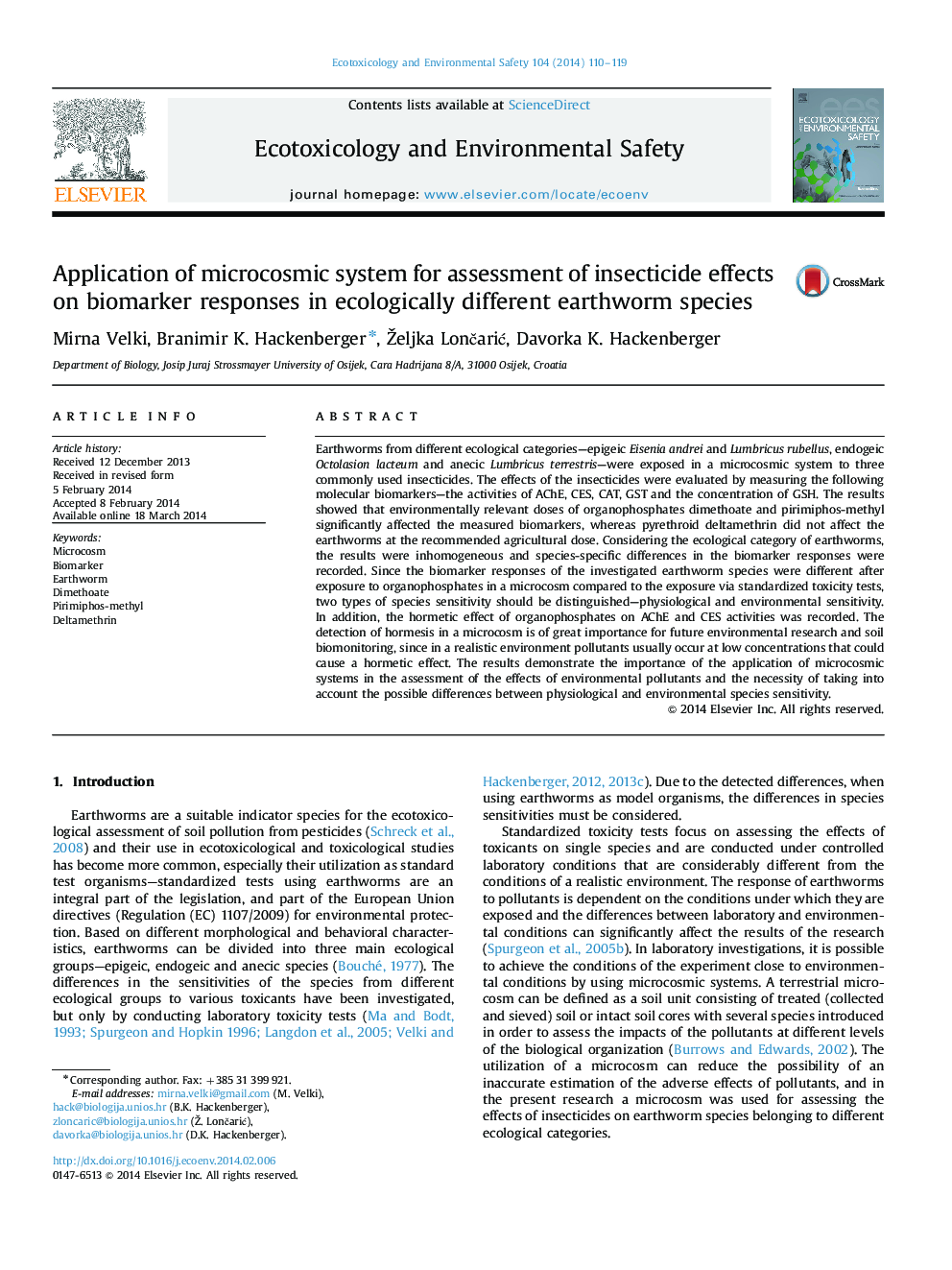| کد مقاله | کد نشریه | سال انتشار | مقاله انگلیسی | نسخه تمام متن |
|---|---|---|---|---|
| 4420131 | 1618959 | 2014 | 10 صفحه PDF | دانلود رایگان |
• Exposure of earthworms to three insecticides using microcosmic system.
• Usage of earthworm species belonging to different ecological categories.
• Different sensitivity of investigated earthworm species to organophosphate exposure.
• Different responses in microcosmic system compared to standardized toxicity tests.
• Physiological and environmental species sensitivity should be distinguished.
Earthworms from different ecological categories—epigeic Eisenia andrei and Lumbricus rubellus, endogeic Octolasion lacteum and anecic Lumbricus terrestris—were exposed in a microcosmic system to three commonly used insecticides. The effects of the insecticides were evaluated by measuring the following molecular biomarkers—the activities of AChE, CES, CAT, GST and the concentration of GSH. The results showed that environmentally relevant doses of organophosphates dimethoate and pirimiphos-methyl significantly affected the measured biomarkers, whereas pyrethroid deltamethrin did not affect the earthworms at the recommended agricultural dose. Considering the ecological category of earthworms, the results were inhomogeneous and species-specific differences in the biomarker responses were recorded. Since the biomarker responses of the investigated earthworm species were different after exposure to organophosphates in a microcosm compared to the exposure via standardized toxicity tests, two types of species sensitivity should be distinguished—physiological and environmental sensitivity. In addition, the hormetic effect of organophosphates on AChE and CES activities was recorded. The detection of hormesis in a microcosm is of great importance for future environmental research and soil biomonitoring, since in a realistic environment pollutants usually occur at low concentrations that could cause a hormetic effect. The results demonstrate the importance of the application of microcosmic systems in the assessment of the effects of environmental pollutants and the necessity of taking into account the possible differences between physiological and environmental species sensitivity.
Figure optionsDownload as PowerPoint slide
Journal: Ecotoxicology and Environmental Safety - Volume 104, June 2014, Pages 110–119
